|
Displaying items by tag: storage

In 2000, the Denver Art Museum received a painting titled Venice: The Molo from the Bacino di S. Marco from the foundation of a deceased local collector. Covered in grime, the work was attributed to a student of the Italian 18th century painter Giovanni Antonio Canal (1697-1768), better known as Canaletto, and placed in storage.
In 2007, Timothy Standring, the museum’s curator of painting and sculpture, noticed the canvas while doing routine inventory. Standring saw past the layers of discoloration to the masterful brushstrokes and detailed figures that lay beneath the grime. Intrigued, Standring embarked on a Canaletto-based research project that eventually brought him to London to meet with Charles Beddington, a renowned expert on the artist. After their meeting, during which Standring presented a photograph of the painting, Beddington agreed to visit the Denver Art Museum to examine the painting in person.
In January 2012, Beddington arrived in the United States and identified the work as an authentic Canaletto; he also dated the painting 1724, meaning it is one of the artist’s earliest undocumented works. The museum soon received a grant from the European Fine Art Fair Restoration Fund to restore the painting, a job that was delegated to James Squires, the institution’s associate conservator of paintings. Over 100 hours of restoration later, Squire’s uncovered the masterpiece that was there along. The painting, which features a brightly colored Venetian scene, is currently on view at the Denver Art Museum.
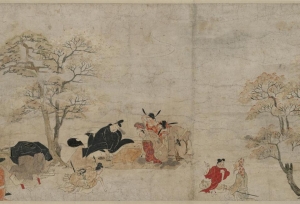
On April 2, 2013, the exhibition Japanese Masterpieces will open in Osaka, Japan. The show, which was organized by the Museum of Fine Arts (MFA) in Boston, is in the midst of a 15-month tour of Japan. Works on view include a 1,300-year-old Buddhist painting; rare folding screens; treasured Japanese scroll paintings; and many other rare works. While all of the objects are part of the MFA’s illustrious collection of Japanese art, the exhibition will not be shown in Boston. In fact, many of the works from the museum’s impressive collection remain out of the public’s view.
The MFA does present a selection of their Japanese art holdings on a rotating basis in their galleries, but limited display space and the works’ sensitivity to light means a large portion the collection remains in storage. While the museum did mount a new display of Japanese art in January 2013, when the works from Japanese Masterpieces return to Boston this summer, they will not be exhibited.
The MFA began working on Japanese Masterpieces over 15 years ago when a number of Japanese scholars traveled to the MFA to work with the museum’s curators. The team analyzed the MFA’s Japanese art collection and launched a significant conservation project, which was geared at the current show. Japanese Masterpieces was organized in collaboration with the Tokyo National Museum and has been on view at three venues so far. Attendance has already surpassed one million visitors. The show will be on view in Osaka through June 16, 2013.

The European Fine Art Foundation, organizers of the venerable European Fine Art Fair (TEFAF), which is held annually in Maastricht, Netherlands, have been discussing launching a new art fair in China with the help of Sotheby’s. While it may seem like an unusual pairing, TEFAF and Sotheby’s are looking to join forces in order to tap into China’s thriving art and antiques market, which raised $13.7 billion in 2012.
Last year, Sotheby’s entered into a ten-year joint venture with China’s state-owned media corporation, Beijing GeHua Cultural Development Group. The collaboration will allow Sotheby’s to utilize the free port that GeHua is developing with the Tianzhu Free Trade Zone in Beijing. The port will serve as a tax-advantaged storage location, which is ideal for foreigners looking to buy high-priced artworks overseas. Sotheby’s is the first international auction house to establish itself in Mainland China.
If TEFAF and Sotheby’s decide to move forward with the fair, TEFAF Beijing will launch in 2014. TEFAF Maastricht, the world’s biggest art and antiques fair, is currently taking place in the Netherlands and will wrap up on Sunday, March 24, 2013.
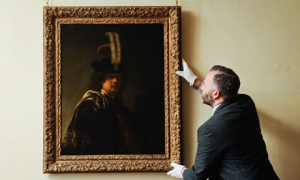
In 2010, the UK’s National Trust was given five paintings from the estate of the late Edna, Lady Samuel of Wych Cross, the widow of Harold, Lord Samuel of Wych Cross, a property developer, philanthropist, and prominent art collector. Among the bequest was a portrait of an ornately dressed man believed to be a relatively unremarkable 17th century painting. Although the work bears a signature and date reading “Rembrandt 1635,” experts believed it to be a later copy or the work of one of the Dutch master’s pupils.
The painting, which spent nearly two years in storage, has just been identified as an authentic Rembrandt (1606-1669) self-portrait worth over $30 million. The painting hadn’t been examined since 1968 and recent X-ray analysis along with newly found circumstantial evidence from the Rembrandt Research Project indicates that the work is in fact genuine.
The self-portrait is the only Rembrandt in the National Trust’s collection of 13,500 paintings and will remain on view at Buckland Abbey through the end of tourist season. Once it is taken off view the painting will be undergo a thorough cleaning and further technical analysis. Experts will perform dendrochronology to date the beech panel the work is painted on, the paint will be analyzed, and the painting will be x-rayed again to check for under-drawings.
David Taylor, the National Trust’s curator of paintings and sculpture, expects to have a final confirmation on the painting by early next year.

A painting by the 17th century Flemish Baroque artist, Anthony van Dyck (1599-1641), was discovered in a storage room belonging to the Bowes Museum in England. Portrait of Olive Boteler Porter was purchased by the Bowes Museum’s founders, John and Josephine Bowes, in 1866 and has been in the institution’s collection since it opened to the public in 1892.
The painting’s poor condition led museum officials to record it in files as ‘School of van Dyck’ rather than an original van Dyck masterpiece. Relegated to a storage room, the work was discovered when it was photographed earlier this year for a project committed to putting all of the UK’s publically owned oil paintings on a single website. Art historian and dealer, Dr. Bendor Grosvenor, who is working on the digital venture, recognized the wrongly identified painting as an original Van Dyck.
The oil on canvas painting features the expert drapery and coloring often present in van Dyck’s female portraits from the 1630s. Originally thought to be a painting of Queen Henrietta Maria, additional research identified the sitter as Olive Boteler Porter, the queen’s lady-in-waiting and the wife of van Dyck’s friend and patron Endymion Porter.
After being examined by various van Dyck scholars, the painting has been authenticated. The recently restored masterpiece is now on view at the Bowes Museum.
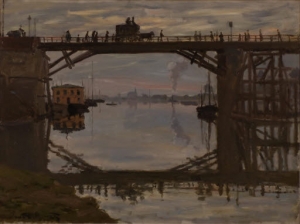
The London branches of Sotheby’s and Bonhams will join forces with the Cologne-based auction house, Lempertz, to sell off works from the late Gustav Rau’s (1922-2002) vast collection. Rau, a well-known art collector and philanthropist, passed away suddenly in 2002, leaving his remarkable collection to Unicef’s German branch. Rau’s holdings, which include many Old Master and Impressionist paintings and sculptures, were estimated to be worth around $600 million at the time of the bequest.
While Unicef has sold a number of Rau’s works to fund ongoing projects over the years, this is the first time a significant portion of the collection has come up for sale. The auction, which is planned to take place this summer, will feature works by Jean-Honoré Fragonard (1732-1806), El Greco (1541-1614), and Claude Monet (1840-1926) among many others. The works are all in pristine condition as Rau either left his collection in storage or offered them to museums for exhibition purposes rather than hanging them in his own home.
All proceeds from the sales will benefit children’s causes, specifically in emerging countries. Rau, who spent much of his life working as a doctor in Africa, was a champion of clean drinking water initiatives and better vaccination practices in developing areas. Unicef plans to use a large portion of the funds to finish a children’s hospital in the Democratic Republic of the Congo that Rau founded before his death.
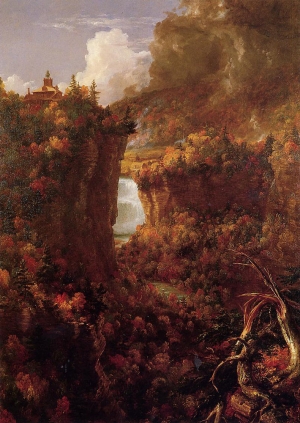
A significant painting by Thomas Cole (1801-1848), the English-born American artist who founded the Hudson River School, will be sold to benefit the Seward House Museum in Auburn, New York. Portage Falls on the Genesee (1839) was given to the American politician William H. Seward (1801-1972) while he was the governor of New York prior to the Civil War. Seward went on to serve as Secretary of State under Abraham Lincoln and Andrew Johnson.
The painting, which depicts what is now Letchworth State Park in western New York, has been a part of the Seward Museum’s collection for decades. Seward’s home and contents were donated to the Fred L. Emerson Foundation in the 1950s by Seward’s grandson, William Henry Seward III. The Seward House opened to the public in 1955 and became a registered National Historic Landmark in 1964. The museum became a fully independent, not-for-profit museum in 2009 and the Cole painting was retained by the foundation.
The recent discovery of the painting’s value and the subsequent need for greater security prompted officials to put the work up for sale. Funds from the sale will be split between the Emerson Foundation and the Seward House Museum. The museum plans to use its portion of the proceeds to further its preservation mission. Portage Falls on the Genesee is being kept in a secure storage location until the sale is official.
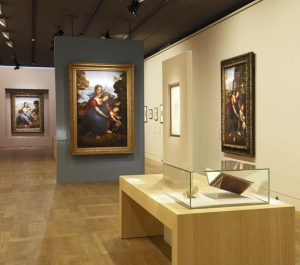
Leonardo da Vinci’s (1452-1519) Virgin and Child with Saint Anne currently resides in the Louvre’s illustrious collection in Paris. Last year, the painting was the highlight of an exhibition at the French institution, which included compositional sketches, preparatory drawings, and landscape studies as well as related works by other artists. The work even made an appearance at the Louvre’s outpost in Lens, an industrial town in northern France. Considered his final masterpiece, da Vinci worked on Virgin and Child with Saint Anne for years, ultimately leaving the painting unfinished at the time of his death in 1519.
The J. Paul Getty Museum in Los Angeles recently put a different version of the painting on view. The work, which appeared in the Louvre’s exhibition, was made in da Vinci’s workshop, but not by his hand. It will remain on view with the museum’s Italian Renaissance paintings indefinitely.
The painting was bequeathed to UCLA in 1939 by California real estate developer Willitts J. Hole. The work was transferred to the Hammer Museum in 1995 after the university took over management and operation of the institution. Sadly, Virgin Child with Saint Anne has spent decades in storage. In fact, it hasn’t been prominently displayed since the 1940s when it hung in the UCLA library. The reason the work has languished in storage for so long is that the Hammer Gallery requires that any work displayed in its historical art galleries be a part of founder Armand Hammer’s personal collection. Since Virgin and Child with Saint Anne was a gift, it doesn’t qualify.
The painting arrived at the Getty in 2010 prior to being shipped to Paris for the Louvre exhibition. Museum staff analyzed, cleaned, and repaired some varnish before shipping the painting to Europe. Now that Virgin and Child with Saint Anne is back at the Getty, museum officials are happy to have the work on public display.
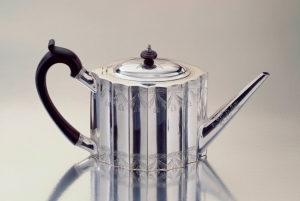
Despite its stellar reputation, the Detroit Institute of Arts’ collection of early American silver has spent the past ten years in storage. Much to the public’s satisfaction, the museum recently decided to put 59 of its most important works back on view.
The Detroit Institute’s silver collection was placed in storage in 2002 while the museum’s historic building was undergoing renovations, which lead to the closure of the American colonial galleries. When the revamped museum reopened in 2007, depleted funds rendered the institution unable to buy new exhibition cases for the silver collection. It wasn’t until 2011 when the Michigan-based Americana Foundation awarded the Detroit Institute a grant that the museum was able to obtain state-of-the-art exhibition cases for their silver collection. The Americana Foundation’s grant also supported new research on the museum’s silver collection.
The Detroit Institute of the Art’s new installation includes American silver as well as two important pieces of late 18th century Chinese export bowls. Highlights include a tankard made in Boston by Edward Winslow (1669-1753) in approximately 1695; a sugar bowl with cover made in New York by Myer Myers (1723-1795), the preeminent Jewish silversmith in colonial America; and a sugar basket made by silversmith and patriot Paul Revere (173-1818) in 1780.
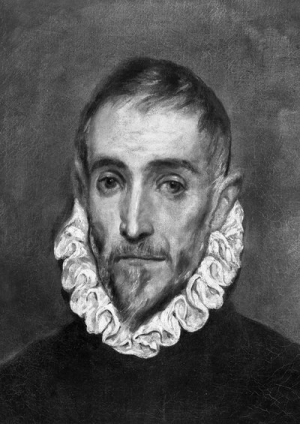
In 1932, Colonel Michael Friedsam, president of the New York City-based department store, B. Altman, bequeathed a huge portion of his estate to the Brooklyn Museum. It recently came to light that nearly a quarter of the 926 gifted works were fakes, misattributions or lacking in terms of quality. The Brooklyn Museum must now come up with a plan for the 229 pieces it no longer wants, which range from Dutch and Renaissance paintings to Chinese porcelains, jewelry, and furniture.
The museum is unable to sell the works for even the smallest profit because Colonel Friedsman’s will contains a clause stating that the museum must gain permission from the estate’s executor before deaccessioning works. Unfortunately, the last executor of Friedsman’s estate passed away in 1962. The Brooklyn Museum is currently working with the New York State attorney general’s office to maneuver around the clause. However, another clause in Friedsman’s will is proving problematic as it states that if the collection is broken up, the works should go to his brother-in-law and two friends. The museum has not yet started looking for the descendants of these three individuals as they are still working with the attorney general’s office to decide how to proceed.
The unwanted works are becoming more difficult to deal with, as the Brooklyn Museum is short on storage space. If the institution is unable to relieve itself of some of these works, they will be forced to rent additional storage spaces, which could cost the museum hundreds of thousands of dollars.
|
|
|
|
|